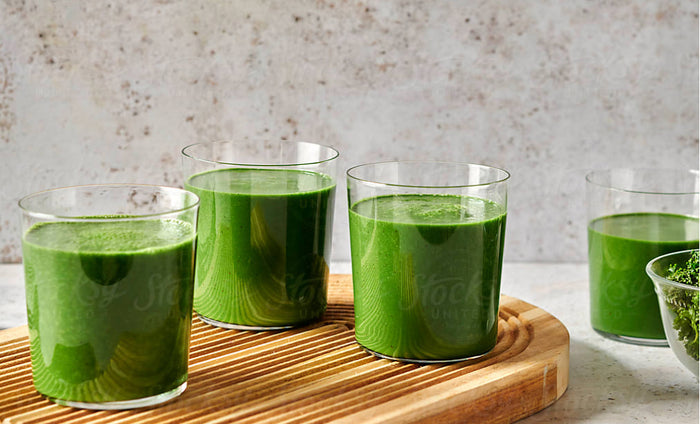February is American Heart Month, which focuses on heart health.
There are many factors that contribute to preventing or managing heart disease, including controlling medical conditions like high cholesterol and high blood pressure, getting adequate physical activity, stopping the use of tobacco products, and of course, nutrition! Choosing the right nutrition and lifestyle modifications can help you to keep your blood pressure and cholesterol under control and reduce your risk of heart disease. Here, we’ll outline some of the top tips for a healthy heart.
Jump to Each Tip
- EAT YOUR FRUITS AND VEGETABLES
- CHOOSE YOUR WHOLE GRAINS
- OPT FOR HEALTHY FATS
- CHOOSE YOUR PROTEINS WISELY
- SEASON WITH HERBS AND SPICES
- INCORPORATE ANTIOXIDANT ACTION
- MODERATION IS KEY
1. Eat your fruits and veggies
You’ve probably heard that you should increase your fruit and vegetable intake, but why is it so important? Fruits and vegetables are jam-packed with vitamins, minerals, antioxidants, and fiber, all of which are good for a healthy heart. Fiber plays a role in lowering cholesterol and blood pressure, and also helps to keep us feeling satisfied and comfortably full. Aim for at least 5 servings of fruits and vegetables daily; a 2017 systematic review in the International Journal of Epidemiology found a slightly decreased risk of cardiovascular disease with 5 servings per day, and the risk reduction jumped up to 28% in those who ate 10 servings of fruits and vegetables daily!
2. Choose Whole Grains
Whole grains include all parts of the grain, whereas refined grains have nutrients and fiber stripped away in processing. Whole grains are good sources of fiber, vitamins, minerals, and even antioxidants, all of which are protective of our hearts. Fiber plays a role in reducing blood cholesterol levels and reducing the risk of heart disease. When shopping for products like bread, pasta, or crackers, identify whole grain options by ensuring the first ingredient is a whole grain and look for the whole grain stamp on the front of the package. Try to make at least half the grains you consume whole grains. Fill up about ¼ of your plate with whole grains like brown rice, quinoa, farro, oats, or barley to reap the benefits of whole grains on heart health.

Featured Product
February is American Heart Month, which focuses on heart health.
Lorem ipsum dolor sit amet consectetur. Amet odio quis commodo mauris viverra nunc vulputate. Vestibulum vestibulum aliquam turpis magna sollicitudin. Aliquet vitae nibh commodo hendrerit placerat purus id quam cras. A congue arcu tellus ligula phasellus velit libero eget. Accumsan nisl praesent congue vel.
3. Opt for Healthy Fats
Not only do we want to increase our consumption of healthy fats, but we also want to replace unhealthy fats with healthy ones! Healthy, or unsaturated, fats are generally liquid at room temperature and come from plant sources. Unsaturated fats have been shown to improve cholesterol levels in our blood. Unhealthy, or saturated, fats may raise our LDL (bad) cholesterol levels. Saturated fats are generally solid at room temperature and are found in red meat, high-fat dairy products, and processed and fried foods. Swap your saturated fats for unsaturated ones like olive oil, canola oil, avocado, nuts, and seeds, and incorporate fatty fish like salmon or tuna in your diet in place of meat 2-3 times weekly.
4. Choose your Proteins Wisely
Protein is necessary for many functions in our bodies including building and maintaining muscles, healing wounds, and much more. Protein also helps us to feel satisfied at mealtime. Choosing the right kind of protein can play a role in reducing the risk of heart disease. Red meat and fatty cuts of meat are higher in unhealthy saturated fat, while fatty fish, plant proteins like beans and legumes, and lean cuts of poultry are better for our hearts. Try swapping out red meat with a lean, heart-healthy protein choice when you can.
5. Season with Herbs and Spices
Not only are herbs and spices a great alternative to salt when giving the flavor to your favorite recipes, but they’re also known to be powerful antioxidants! Reducing the salt content of your diet can help to reduce blood pressure, and using herbs and spices to add a big flavor allows us to reduce salt intake without food tasting bland. Studies have shown that spices like cinnamon, turmeric, ginger, garlic, and many more may have beneficial effects on reducing inflammation, blood pressure, and more! Get creative with your spice cabinet and play with new combinations to create new favorite recipes.
6. Incorporate Antioxidant Action
Antioxidants play a role in reducing inflammation by neutralizing free radicals in our bodies. Free radicals can damage our bodies’ cells, which can lead to the development of many chronic conditions, including heart disease. Get your antioxidants from eating a variety of whole foods like vibrantly colored fruits and vegetables, whole grains, herbs and spices, and even healthy fats.
7. Moderation is Key
The above nutrition tips can feel quite overwhelming, but don’t have to be. Start by making one small change at a time and build upon those changes as they become habits. And remember: nutrition is never going to be perfect! Focus on adding more balance, and honoring those cravings for fun foods here and there. There’s room for all foods in a healthy, balanced diet.
References
International Journal of Epidemiology
Hopkins Medicine
CDC
Harvard School of Public Health





